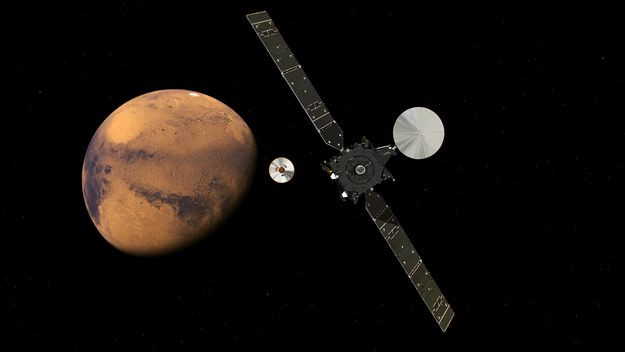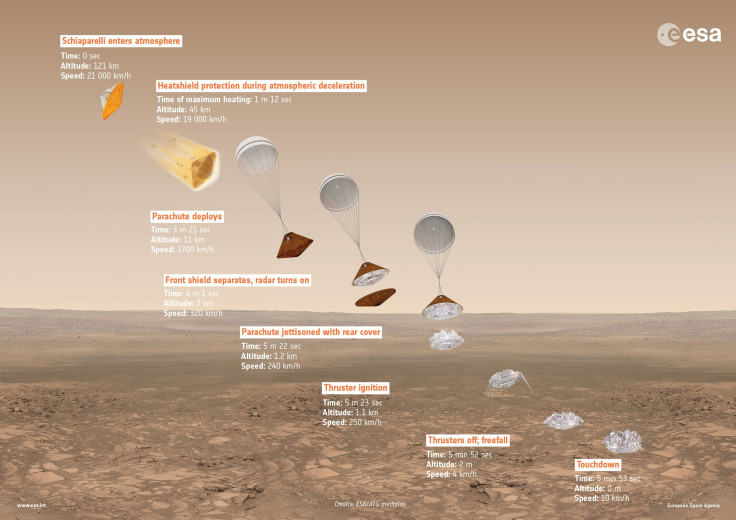What Happened To The ExoMars Lander? NASA Images Suggest Schiaparelli Crashed

The lander of the spacecraft sent to Mars as part of the ExoMars mission may have exploded upon landing, according to images from NASA. The two-part spacecraft—created in collaboration between the European Space Agency (ESA) and the Russian Federal Space Agency—consisted of a solar-powered Trace Gas Orbiter and the Schiaparelli lander. While the orbiter accomplished its goal of entering the orbit of the red planet, the lander’s quest to reach the surface of Mars was less successful.
On March 14, the orbiter and lander took off from the Baikonur Cosmodrome in Kazakhstan. After seven months and a 300-mile journey, the spacecraft entered the orbit of Mars and the lander separated from the orbiter to makes its six-minute descent onto the planet. The lander’s fate remained murky, as it lost contact before touchdown.
NASA’s Mars Reconnaissance Orbiter is equipped with a low-resolution CTX camera. Analyzing and collecting images from the orbiter’s camera show the lander descending onto the planet with a parachute. But, later on, images show a dark patch a little over a mile from the parachute, suggesting the lander exploded on impact.

The ESA is still studying the data, but it estimates the lander went into freefall—traveling at 180 miles per hour—a mile or two before reaching the surface of Mars. The problem may have to do with the nine thrusters on the lander, which are supposed to slow the descent. The agency believes some of the thrusters may have prematurely turned off. That, coupled with the fact that the lander likely had a full thruster propellant tank, could have created a recipe for an explosive landing.
The goal of the lander, which was slated to descend on the Meridiani Planum, was to test landing technologies that can potentially help future missions to Mars. Equipped with instruments to test for temperature, humidity, dust and wind, the lander had enough battery to last a few days.
The orbiter, meanwhile, remains in the orbit of Mars and will circle the planet for the next six years searching the atmosphere for methane or “signatures of active biological or geological processes.”
“Trace gases in the martian atmosphere include methane, water vapour, nitrogen dioxide and acetylene,” explains the ESA on its website. “Although making up a very small amount of the overall atmospheric inventory, methane in particular holds key clues to the planet’s current state of activity.”
© Copyright IBTimes 2025. All rights reserved.






















